Duration: 4:29
Project: Judaica
Song: En ca de mi padre
Practitioner: Agnieszka Mendel
Director: Ben Spatz
Videography: Ben Spatz
Date: 17 May 2017
Venue: Centre for Psychophysical Performance Research
Source File: J029
COMMENTARY
Ben
I first asked Agnieszka to move freely and then to explore a dreamlike scenario or situation while listening to the recorded version of this song from the album Ballads, Wedding Songs, and Piyyutim of the Sephardic Jews of Tetuan and Tangier, Morocco. By the time I took the wireless headphones away, she had developed an entire short narrative or ‘line of actions’ which she was able to repeat immediately and with great energy. I was totally absorbed by this narrative and amazed at its fullness.
In a later conversation, Agnieszka indicated that she was not sure about what she had been doing and was concerned that it was too intense, emotional, or unstructured. We had just seen a presentation on Stanislavsky and decided that what we were talking about was related to his concept of perezhivanie or living-through an imagined moment. This is an important concept for me and I am particularly interested in exploring it in a laboratory research context. If this were a theatrical process then we would immediately have to ask ourselves how Agnieszka could repeat what she did in order to place it within a larger composition. I am interested in postponing that question, but I also don’t want to reduce this moment to a therapeutic one. Instead I would like to offer up this kind of emergent perezhivanie as a phenomenon that could be of interest to those who study or work with embodiment and affect in many different fields. What is happening here? How does the narrative become so clear through her actions? What might happen if we later revisit this moment in an open way, not attempting to make it repeatable but perhaps searching again for new meanings around its memory?
Agnieszka
This session was intense. I was surprised by my own immediate immersion into realistic enactments of the narration that was unfolding in my head. And by the intensity of these enactments. What I mean is that I think of myself as a performer who would rather search for metaphors in acting, for symbolic forms, who would build pieces of physical and musical structure first without emotional engagement. Here, in this work, I seem to do quite the opposite. I started with associations which quickly transformed into moods that were the starting point for building a physical structure. I felt pretty awkward but encouraged at the same time because of the understanding that the Judaica project is oriented towards the process of the research at least to the same extent as the effect. So I could relax, release the leash of habits, and experiment.
Later on we had a long focused conversation about it. We spoke of Stanislavsky’s perezhivanie, living-through, presence, associations, structure, emotions, affect, controlled ‘temporary insanity’. We contemplated differences and relationships between them. We asked ourselves questions like: Can one structure associations? Can one structure emotions?
Eda
Working with and through associations is a reoccurring element of our work in the laboratory.
The dictionary defines association as:
- something linked in memory or imagination with a thing or person
- the process of forming mental connections or bonds between sensations, ideas, or memories
- the aggregation of chemical species to form (as with hydrogen bonds) loosely bound chemical complexes.
What makes me ruminate on the notion of association as a technique of the artist is its multilayered ontological capacity. Associations are both abstract and concrete things. They link fragments of lived experiences with dreams, phantasies, stories as well as discursive constructs and concepts. In that sense, associations carry fictional and non-fictional threads. As a practitioner, I am interested in the potency of an association (especially when it emerges as an unforeseen intervention) to affect a somatic exploration. In other words, when do associations become enablers or inhibitors in laboratory research?
An open laboratory space provides a practitioner with multiple material resources such as sound, light, color, image, smell, temperature, physical challenge, pain or humor to encounter an association. A song is one of these material resources which can give birth to various associations. The question is: How do we move forward or pass through an emerging (personal) association in the middle of the studio work? In this video, I watch Agnieszka being precisely led by an association. Even though her actions are narrative-driven as she clearly reacts to things, people or place, I still cannot say what exactly is happening here. This ambiguity is productive as it keeps me engaged with her work and ask questions. One of the questions which arise while I am watching her is: How can we leave an association open and ambiguous in the moment of exploration to keep the physical engagement and the narrative possibilities alive?
I was not present in the studio when this moment was unfolding. During my short break from the laboratory, Agnieszka and Ben tried this new constellation where Ben directed Agnieszka for the first time as he also recorded the session. The video demonstrates the combined role of director and videographer which later became a topic of our focused trio conversations in relation to the question of what boundaries each role has in any constellation.


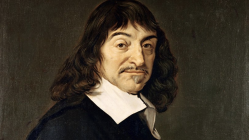
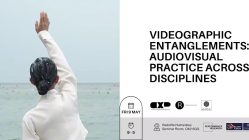
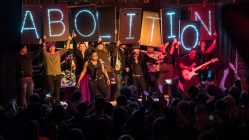
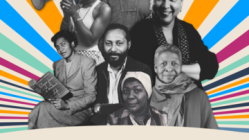
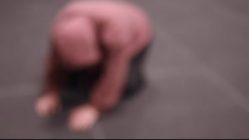
[…] 17 May 2017 perezhivanie or structured delirium […]